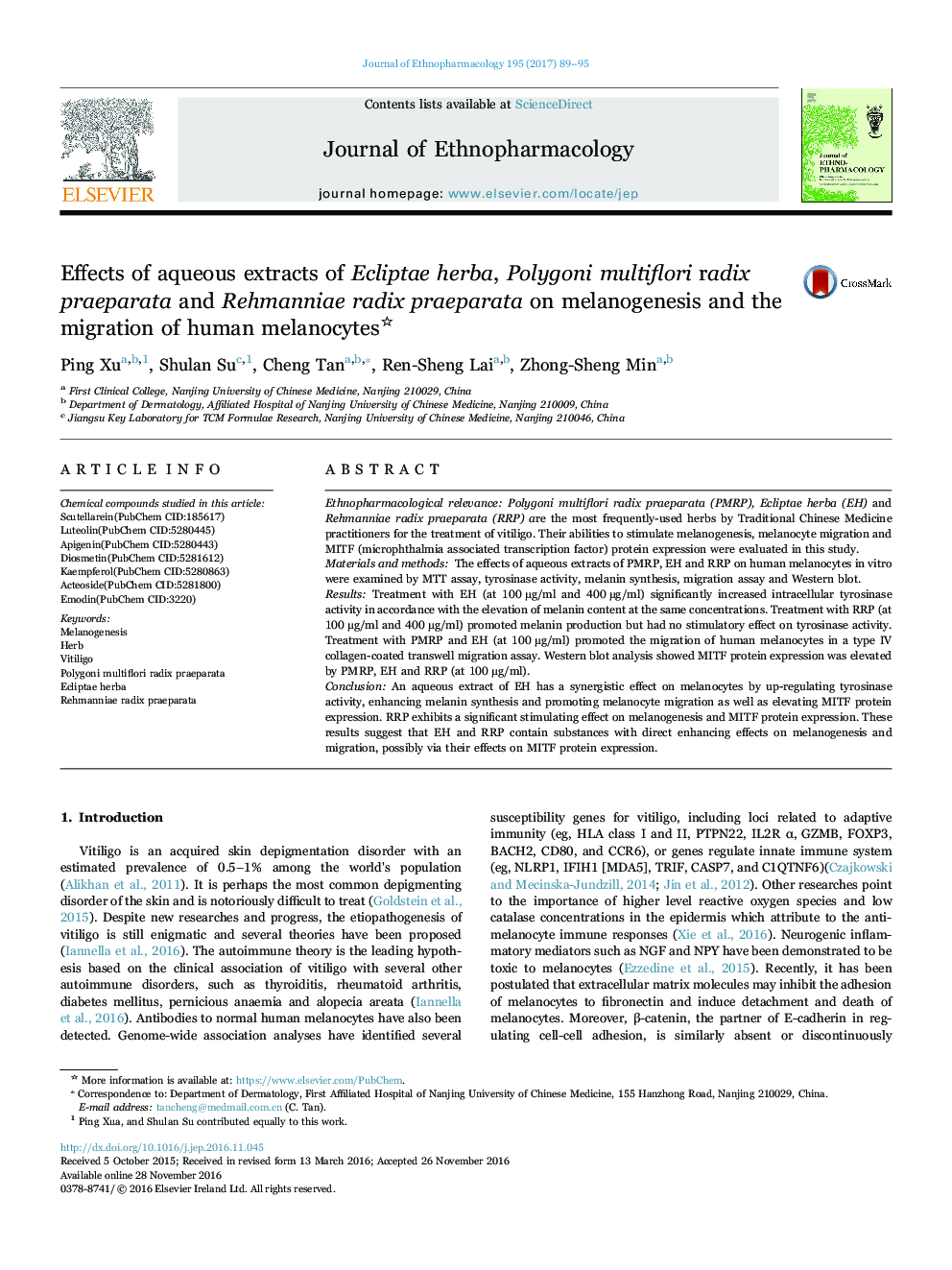| Article ID | Journal | Published Year | Pages | File Type |
|---|---|---|---|---|
| 5556373 | Journal of Ethnopharmacology | 2017 | 7 Pages |
Ethnopharmacological relevancePolygoni multiflori radix praeparata (PMRP), Ecliptae herba (EH) and Rehmanniae radix praeparata (RRP) are the most frequently-used herbs by Traditional Chinese Medicine practitioners for the treatment of vitiligo. Their abilities to stimulate melanogenesis, melanocyte migration and MITF (microphthalmia associated transcription factor) protein expression were evaluated in this study.Materials and methodsThe effects of aqueous extracts of PMRP, EH and RRP on human melanocytes in vitro were examined by MTT assay, tyrosinase activity, melanin synthesis, migration assay and Western blot.ResultsTreatment with EH (at 100 μg/ml and 400 μg/ml) significantly increased intracellular tyrosinase activity in accordance with the elevation of melanin content at the same concentrations. Treatment with RRP (at 100 μg/ml and 400 μg/ml) promoted melanin production but had no stimulatory effect on tyrosinase activity. Treatment with PMRP and EH (at 100 μg/ml) promoted the migration of human melanocytes in a type IV collagen-coated transwell migration assay. Western blot analysis showed MITF protein expression was elevated by PMRP, EH and RRP (at 100 μg/ml).ConclusionAn aqueous extract of EH has a synergistic effect on melanocytes by up-regulating tyrosinase activity, enhancing melanin synthesis and promoting melanocyte migration as well as elevating MITF protein expression. RRP exhibits a significant stimulating effect on melanogenesis and MITF protein expression. These results suggest that EH and RRP contain substances with direct enhancing effects on melanogenesis and migration, possibly via their effects on MITF protein expression.
Graphical abstractDownload high-res image (151KB)Download full-size image
